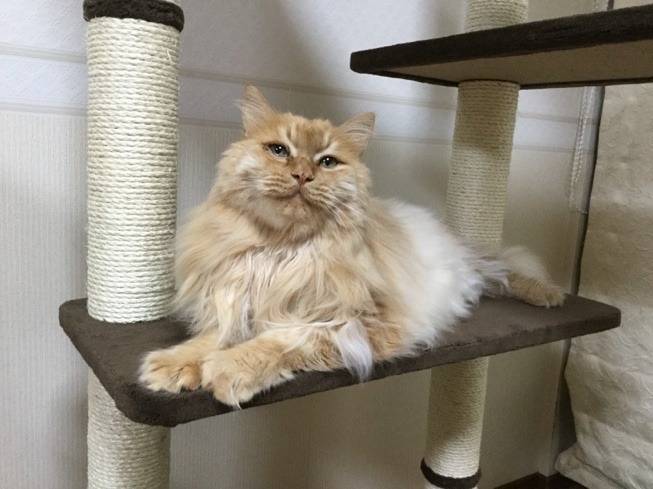Reviewed by Lexie CornerMay 30 2025
Felis catus, the domestic cat, is one of the few social species within the Felidae family. Unlike most wild felines, domestic cats can live in groups and communicate with both other cats and humans - traits that have supported their long-standing relationship with people.
 A cat who participated in the study (photo provided by the owner). Image Credit: KyotoU / Maruyama lab
A cat who participated in the study (photo provided by the owner). Image Credit: KyotoU / Maruyama lab
Despite this close association, cats remain relatively understudied in terms of behavior. While many behavioral studies have been conducted on other mammals, fewer have focused specifically on domestic cats.
To address this gap, researchers at Kyoto University’s Wildlife Research Center are investigating the genetic basis of feline behavior. Their study focuses on the possible connection between behavioral traits, such as purring, and variations in the androgen receptor gene. Although the exact function of purring is not fully understood, previous research suggests it plays a role in communication and survival.
The team conducted behavioral assessments on 280 mixed-breed, spayed or neutered cats living in home environments. They also collected DNA samples to analyze the androgen receptor gene and compared the results with data from other species in the Felidae family.
When we called for participants, we were moved to receive responses from 265 cat owners from across Japan in just a single day, and received kind messages. This reminded us of the strong public interest in cat research.
Yume Okamoto, Study First Author and Doctoral Student, Kyoto University
The findings support the hypothesis that vocal behaviors, including purring, have a genetic basis. Cats with the short-type androgen receptor gene received higher owner-reported purring scores than those with the long-type gene. In addition, male cats with the short-type gene were more likely to vocalize toward humans, suggesting a link between this gene and vocal communication. Female cats with the short-type gene, however, showed more aggression toward unfamiliar people.
The study also suggests that the need for vocal communication may be reduced in cats raised by humans from an early age, often purebred cats. Previous studies have found that purebred cats are more likely to carry the long-type gene, whereas many of the mixed-breed cats in this study, often adopted from stray populations, carried the short-type and showed more frequent vocalization.
When the researchers compared domestic cat genes with those of 11 other Felidae species, they found that closely related wild species like the leopard cat and fishing cat only had the short-type gene. The longer gene variants were unique to domestic cats, suggesting they may have developed through domestication and selective breeding.
These findings may help link genetic markers to specific behavioral traits, which could inform personalized care strategies and support animal welfare. The research team plans to expand the study to include more Felidae species in future work.
“Through our research, we hope to deepen our understanding of cats and contribute to building happier relationships between cats and humans,” added Okamoto.
Source:
Journal reference:
Okamoto, Y., et al. (2025) Association between androgen receptor gene and behavioral traits in cats (Felis catus). PLOS One. doi.org/10.1371/journal.pone.0324055.